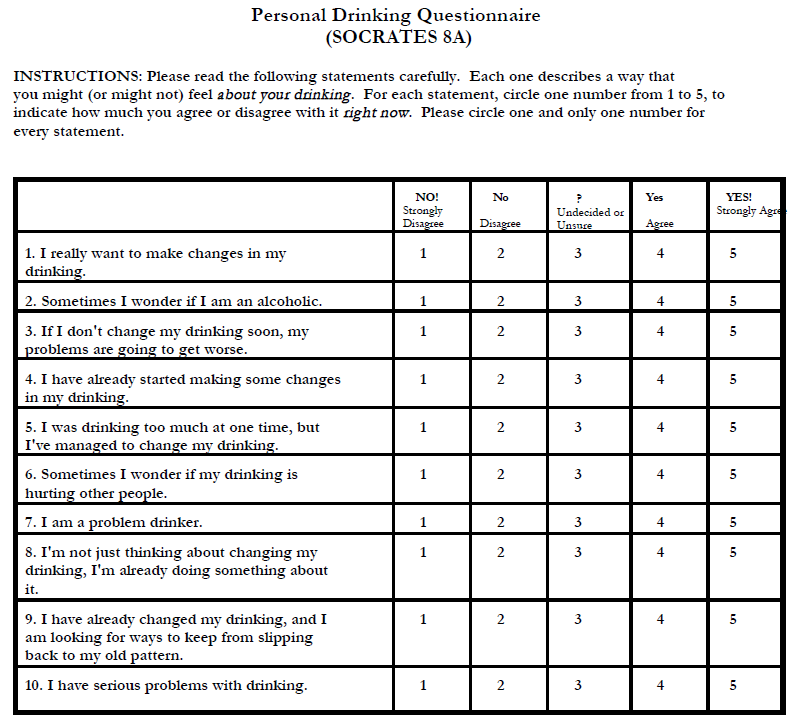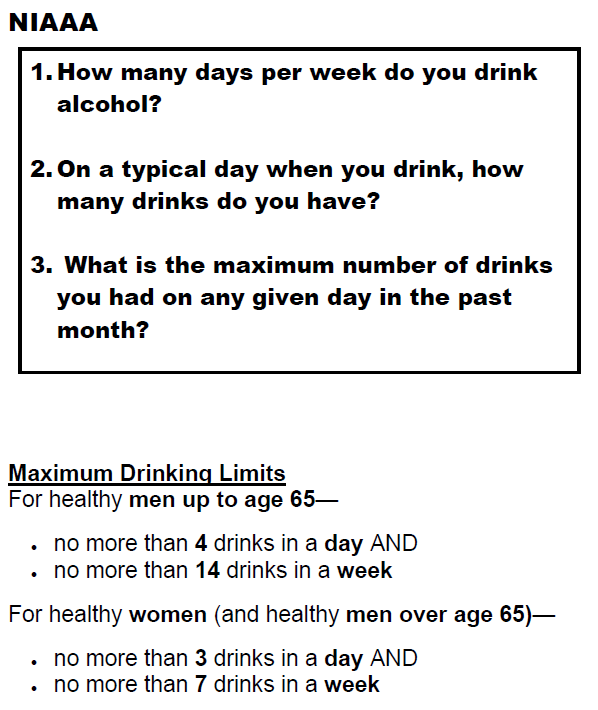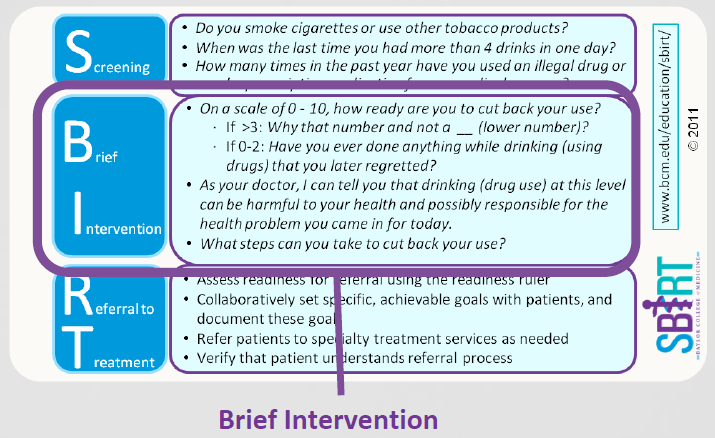It Begins With You
Motivation and Readiness -> Enhancing Motivation for Change in Substance Abuse TreatmentA substantial portion of the motivation for change literature is rooted in reducing or eliminating substance abuse. Three models are described here: FRAMES, the Stages of Change Readiness and Treatment Eagerness Scale (SOCRATES), and Screening, Brief Intervention, and Referral to Treatment (SBIRT).
FRAMES
The FRAMES approach is a type of intervention designed to enhance client motivation for change. The acronym stands for each component of the process.
- Feedback is given regarding the personal risk of continuing to abuse substances.
- Responsibility for change is placed squarely on the person’s shoulders.
- Advice is given to the individual in a non-judgmental manner about reducing or stopping substance abuse.
- Menu of treatment options is given to the client.
- Empathetic counseling showing warmth, respect and understanding is shown by the clinician.
- Self-efficacy or optimistic empowerment is expressed to the client to encourage change.
See: Center for Substance Abuse Treatment. Enhancing motivation for change in substance abuse treatment. Treatment Improvement Protocol (TIP) Series, No. 35. HHS Publication No. (SMA) 13-4212. Rockville, MD: Substance Abuse and Mental Health Services Administration.
The Stages of Change Readiness and Treatment Eagerness Scale (SOCRATES)
SOCRATES is an experimental instrument designed to assess readiness for change in people abusing alcohol, and it has been modified for people abusing drugs as well. The person completes a 19-item tool in which they rate the degree to which they agree with given statements (see samples in diagram below). The tool is scored for three areas: recognition they have a problem; ambivalence as to whether they have a problem, or to the contrary, insight that they do and are ready for change; and taking steps, indicating they are already starting to make positive changes. (See Miller, WR & Tonigan JS. (1996). Assessing drinkers’ motivation for change: The stages of change readiness and treatment eagerness scale (SOCRATES). Psychology of Addictive Behaviors, v. 10 (81-89).)

Source: The University of New Mexico Center on Alcoholism, Substance Abuse, and Addictions; first 10 of 19 questions.
Screening, Brief Intervention, and Referral to Treatment (SBIRT)
SBIRT is an evidence-based practice used to identify, reduce and prevent alcohol abuse. The U.S. Preventive Services Task Force recommends alcohol screening for all adults seen in a primary care setting. SBIRT consists of three major components:
- Screening quickly assesses the severity of substance use and identifies the appropriate level of treatment.
- Brief intervention focuses on increasing a patient or client’s awareness that he or she may have a drinking problem and motivating the person to change their behavior. The healthcare professional provides feedback and advice in a conversational manner.
- Referral to treatment provides those identified with a serious drinking or drug problem with access to alcohol and other drug services.
It consists of a one- to three-item screening tool that is used in primary care centers, hospital emergency rooms, trauma centers, and other community settings to identify and provide early intervention. Organizations often use the National Institute on Alcohol Abuse and Alcoholism’s (NIAAA) three-question screen (see below) or the National Institute on Drug Abuse’s (NIDA) quick screen.

The Baylor College of Medicine developed a script (p. 31) that is the size of an identification badge for their Residency Training Program. It provides prompts for each phase of SBIRT.

SBIRT has a high return on investment in that it does not create a burden on providers but can have very positive outcomes for someone with the problem behavior.
SBIRT has been found to:
- Decrease the frequency and severity of drug and alcohol use
- Reduce the risk of trauma
- Increase the percentage of patients who enter specialized substance abuse treatment
- Reduce hospital stays and emergency department visits
- Yield net cost savings. Savings for each brief intervention exceed treatment costs by 3 to 1.
Extensive resources regarding SBIRT, including a number of tools and training resources, are available on the SAMHSA-HRSA Center for Integrated Health Solutions SBIRT webpage.
